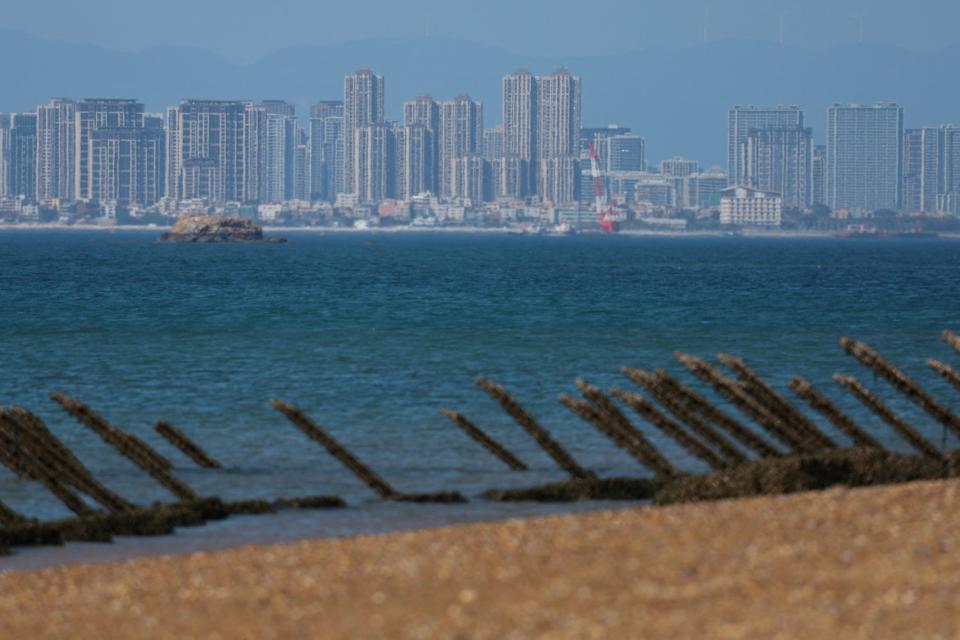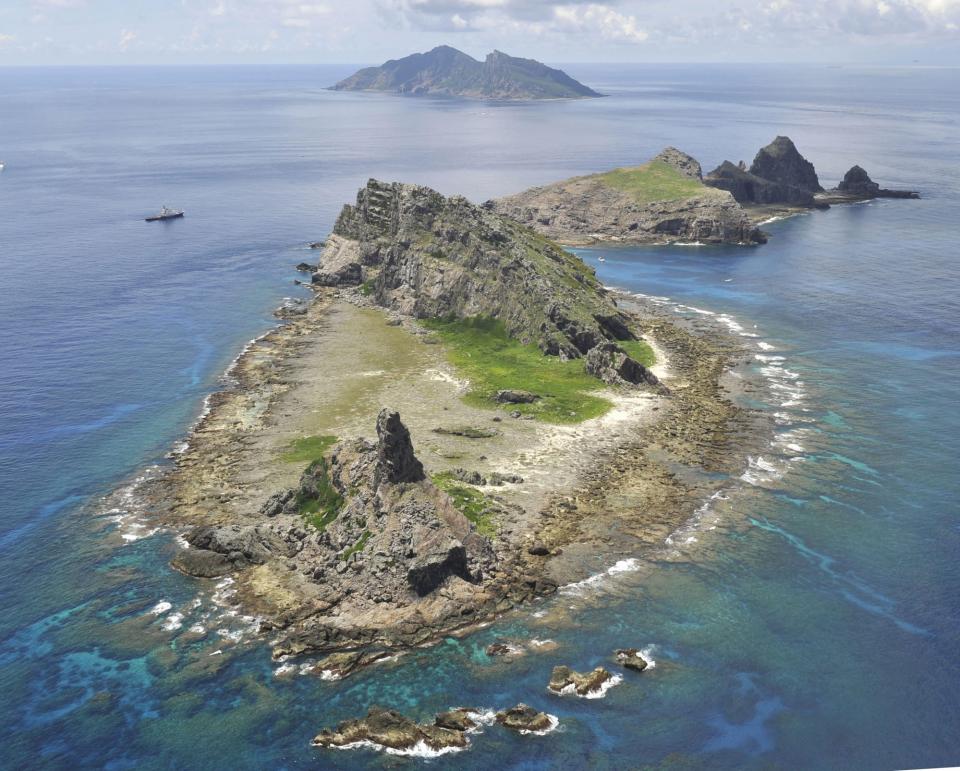China Coast Guard: what does it do and how did it become so powerful?
The frequent maritime face-offs between the China Coast Guard (CCG) and Philippine vessels have drawn significant attention to the CCG's formidable capacity in the vast expanse of the South China Sea.
But its presence extends well beyond this strategic and resource-rich waterway in Southeast Asia; it patrols roughly 14,500km (9,000 miles) of coastline and about 3 million sq km (1.16 million square miles) of maritime territory.
One hotspot it surveys is the East China Sea, near the Diaoyu Islands, also known as the Senkaku Islands in Japan, where Beijing and Tokyo have long engaged in territorial disputes. The CCG has also stepped up its operations near the Taiwanese-controlled island of Quemoy - also known as Kinmen - since February, with mainland Chinese vessels reportedly patrolling waters just five nautical miles from Quemoy in the latest stand-off with the Taiwanese coastguard.
Do you have questions about the biggest topics and trends from around the world? Get the answers with SCMP Knowledge, our new platform of curated content with explainers, FAQs, analyses and infographics brought to you by our award-winning team.
It has only taken around a decade for the CCG to evolve into a powerful instrument of China's maritime strategy. With a fleet of some of the biggest and most heavily armed coastguard vessels in the world, the CCG's capabilities now far exceed those of many other nations.
"By doubling its number of large patrol ships in the last decade and combining several organisations to form the CCG, China has assembled more than 500 surface vessels into the world's largest coastguard fleet," John Bradford, executive director of the Yokosuka Council on Asia-Pacific Studies, said.
The CCG was formed in 2013 from four maritime administrative agencies in a major overhaul of China's maritime enforcement agency. Until then, maritime management was largely inefficient and in disarray - described as "five dragons stirring up the sea". Consolidating them allowed Beijing to pursue a more cohesive maritime law enforcement strategy.
In 2018, the CCG was transferred from the civilian State Oceanic Administration to the People's Armed Police, which reports to China's Central Military Commission.
Often referred to as "China's Second Navy", the CCG is seen as a quasi-military force and consists of the North, East and South China Sea sub-bureaus.
The 2021 Coast Guard Law outlines the CCG's multifaceted missions. These include law enforcement operations, safeguarding critical islands and reefs, combating maritime crime, countering smuggling activities, supporting the development and exploitation of marine resources, preserving the marine environment, and managing fisheries.
Of those, law enforcement is the most important task to protect China's sovereignty and territorial integrity.

The China Coast Guard has grown over the last decade into the world's largest coastguard fleet. Photo: Weibo/@China Coast Guard alt=The China Coast Guard has grown over the last decade into the world's largest coastguard fleet. Photo: Weibo/@China Coast Guard>
How many vessels does it have?
Since it was combined into one agency, the CCG has sped up its expansion and fleet modernisation process, so that now, just over a decade later, it has evolved into the world's largest maritime law enforcement fleet.
Although Beijing does not reveal the exact number of its coastguard vessels, a Japan Coast Guard (JCG) report last year indicated that China now has 157 large regional and oceangoing patrol vessels with full-load displacement of more than 1,000 tonnes - double that of Japan.
The Pentagon's 2023 report on China's military power said the CCG operated more than 50 regional patrol combatants (over 500 tonnes) suitable for limited offshore operations, and an additional 300 coastal patrol craft (ranging from 100 to 499 tonnes).
Many of the CCG's vessels are modified decommissioned naval ships, and while the missile launchers and heavy firearms are removed at handover, artillery such as 76mm calibre guns remain, according to Zheng Zhihua, a research associate professor specialising in maritime affairs at Shanghai Jiao Tong University.
In recent years, more than 20 Type 056 corvettes have been transferred from the Chinese navy and modified for coastguard operations. Two Type 072 landing ships have also been converted for such operations, both at around 4,000 tonnes.
"Newer China Coast Guard vessels are larger and more capable than older vessels, allowing them to operate further offshore and remain on station longer," the Pentagon report said.
It also added that the newer and larger coastguard vessels came equipped with helicopter facilities, high-capacity water cannons, multiple interceptor boats and weaponry guns from 20mm to 76mm.
With full displacement of 12,000 tonnes and length of 165 metres (541 feet), China's coastguard ships 2901 and 5901 are the largest cutters in the world, surpassing even the US Navy's 9,800-tonne Ticonderoga-class guided-missile cruisers. The impressive size of the 5901 has earned it the nickname "The Monster".
Experts note that a larger load capacity and displacement enable a ship to carry more equipment, fuel, supplies and personnel, thereby extending its patrol and enforcement capabilities.
A 2017 report from US Naval War College estimated that the Chinese coastguard ships had a total tonnage of 190,000 in 2016, compared to Japan's 105,500 and the Philippines' 20,000 at that time.

The Taiwan-controlled island of Quemoy is just 10km from the mainland, shown here with anti-landing barricades on the beach. Photo: Reuters alt=The Taiwan-controlled island of Quemoy is just 10km from the mainland, shown here with anti-landing barricades on the beach. Photo: Reuters>
In June, Hong Kong media reported that Beijing may be building a large coastguard vessel at Shanghai's Jiangnan Shipyard, which is similar in appearance to the Chinese navy's 052D missile destroyer, according to satellite images.
However, Zheng noted that having many big vessels did not always give law enforcement an overwhelming advantage at sea, as many waterways around the Spratly Islands were very shallow.
"Large ships might not be able to enter these areas, while smaller and lighter vessels can be more manoeuvrable near shallow waters such as the Second Thomas Shoal and Sabina Shoal," he said.
Zheng said that in the 2010s, the Chinese coastguard was usually in an unfavourable position against the Japanese coastguard during stand-offs around the Diaoyu Islands.
"However, the situation could now be reversed; Chinese coastguard capabilities are catching up quickly, and Chinese ships are likely larger and their equipment is newer."
According to the Japan Coast Guard report, it operates 71 large patrol ships of similar size to Chinese coastguard vessels. In 2012, the Japanese coastguard had a significant numerical advantage over its Chinese counterpart, with 51 large ships compared to China's 40.
Bradford, from the Yokosuka Council on Asia-Pacific Studies, noted that the Japanese coastguard was also among the world's most capable forces.
"It is not as large as the China Coast Guard, but its technology, training and operational readiness are of the highest quality. It has been able to match the CCG in the East China Sea disputes," he said.
He also said the CCG had a notable advantage over its counterparts of other South China Sea claimants, as its vessels were "more numerous, larger and more heavily armed".
Zheng said the difference in size and ability of the Philippine Coast Guard and its Chinese counterpart was even greater.
The largest ships owned by the Philippine Coast Guard are the sister vessels BRP Teresa Magbanua and BRP Melchora Aquino, supplied by Japan in 2022. Each vessel is 96.6 metres (317 feet) long with a gross tonnage of 2,260.
"At such a scale a ship may only classify as a small-to-medium-sized vessel, at most a medium-sized vessel in the Chinese Coast Guard fleet," Zheng said.
But the Philippine coastguard has embarked on a modernisation programme, including acquiring new vessels and upgrading others.
In November, Japan and the Philippines announced that Manila would acquire five 97-metre (318-feet) multi-mission response vessels from Japan under its Official Development Assistance (ODA) loan, with delivery expected between 2027 and 2028.
Japan is also planning to upgrade its coastguard fleet. Sources told Japanese broadcaster NHK that the country was considering building a new patrol vessel larger than it has done before - possibly 200 metres (656 feet) long and 30,000 tonnes - and it would be capable of carrying three helicopters and dozens of high-speed rubber boats.

Japanese and Chinese coastguards often clash at the Diaoyu Islands in the East China Sea. Photo: Kyodo alt=Japanese and Chinese coastguards often clash at the Diaoyu Islands in the East China Sea. Photo: Kyodo>
What 'grey zone' measures does the China Coast Guard use?
Over the past year, Beijing has taken "control measures" against Philippine vessels in the South China Sea. These have included intercepting, ramming, deploying water cannons and what Manila says were military-grade lasers, and boarding and inspections.
Zheng from Shanghai Jiao Tong University said the Chinese coastguard followed a set of incremental procedures when conducting law enforcement activities at sea, starting with verbal communication and warnings.
If the verbal warning does not work, Beijing might opt for "other grey-zone tactics", such as deploying water cannons and lasers, or even ramming ships when foreign vessels are undeterred and not dispersed by water cannons, he said.
In previous clashes between Beijing and Manila in the South China Sea, Manila also accused Beijing of using a long-range acoustic device that could impair the hearing of Filipino crew members.
During the latest tense stand-off between the Chinese coastguard and a Philippine navy boat in mid-June, the Chinese coastguard conducted its first "boarding inspection" since new rules increased its law enforcement powers, which Zheng said "might generate certain controversy".
"The vessel subject to the Chinese coastguard's enforcement was a naval ship, and theoretically, it should enjoy 'state immunity'. Such enforcement activities could potentially cause significant legal controversy," he said.
Bradford said: "The Chinese coastguard's use of water cannons is deliberately calculated to be sufficiently forceful as to deter the Philippines from putting sailors in harm's way. Yet these water cannons are by no means peaceful - their force bends metal and breaks windows. Their use puts lives in danger."
But while it is expected that Beijing will continue to use grey-zone measures in its South China Sea scuffles against Manila, it would not cross the line and open fire, Zheng said. That could be seen as an armed attack and trigger the mutual defence treaty between Manila and Washington, flaring up the situation into something much bigger.
"The Chinese coastguard is unlikely to be the one to fire the first shot ... The use of firearms is only permitted if the other party initiates the attack, allowing for a self-defence response," he said.
This article originally appeared in the South China Morning Post (SCMP), the most authoritative voice reporting on China and Asia for more than a century. For more SCMP stories, please explore the SCMP app or visit the SCMP's Facebook and Twitter pages. Copyright © 2024 South China Morning Post Publishers Ltd. All rights reserved.
Copyright (c) 2024. South China Morning Post Publishers Ltd. All rights reserved.

 Yahoo Finance
Yahoo Finance 